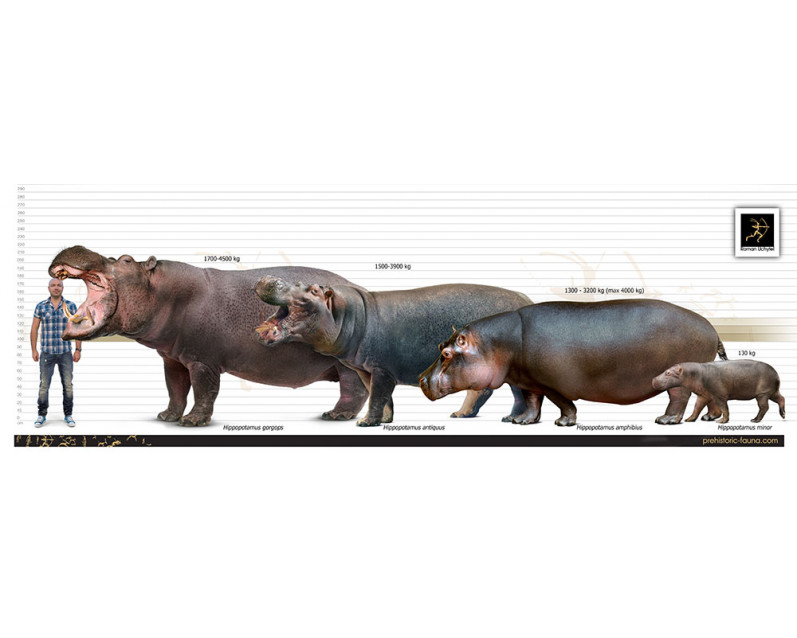Hippopotamus gorgops
263263Hippopotamus gorgops (Hippopotamus gorgops Dietrich, 1928)
Order: Artiodactyla
Family: Hippopotamidae
Time period: during the late Miocene- early Pliocene (Africa,Europe)
Size: 4.3 cm in length, 210 cm in height, 3,900 - 4500 kg of weight
Typical representative: Hippopotamus gorgops Dietrich, 1928
Hippopotamus gorgops is an extinct species of hippopotamus. It first appeared in Africa during the late Miocene, and eventually migrated into Europe during the early Pliocene (where its fossils were first discovered). It became extinct prior to the Ice Age. With a length of 4.3 metres and a shoulder height of 2.1 metres and with a weight of 3,900 kilograms H. gorgops was much larger than its living relative, H. amphibius. Another feature setting it apart from H. amphibius were its eyes. Modern hippos have eyes placed high on the skull, but H. gorgops had orbits extruding above its skull, making it even easier for the creature to see its surroundings while (almost) fully under water.
From Wikipedia, the free encyclopedia
Hippopotamus gorgops (Hippopotamus gorgops Dietrich, 1928)
Order: Artiodactyla
Family: Hippopotamidae
Time period: during the late Miocene- early Pliocene (Africa,Europe)
Size: 4.3 cm in length, 210 cm in height, 3,900 - 4500 kg of weight
Typical representative: Hippopotamus gorgops Dietrich, 1928
Hippopotamus gorgops is an extinct species of hippopotamus. It first appeared in Africa during the late Miocene, and eventually migrated into Europe during the early Pliocene (where its fossils were first discovered). It became extinct prior to the Ice Age. With a length of 4.3 metres and a shoulder height of 2.1 metres and with a weight of 3,900 kilograms H. gorgops was much larger than its living relative, H. amphibius. Another feature setting it apart from H. amphibius were its eyes. Modern hippos have eyes placed high on the skull, but H. gorgops had orbits extruding above its skull, making it even easier for the creature to see its surroundings while (almost) fully under water.
From Wikipedia, the free encyclopedia


-797x638.jpg)


-70x56.jpg)









